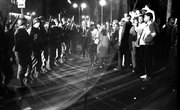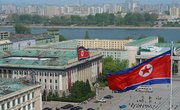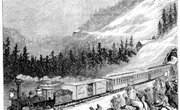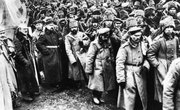The 1960s brought great changes to the political and social landscape in the United States. Americans made their voices heard in the streets and inside the voting booth. In fact, according to PBS, more Americans were voting in the 1960s than in any other decade since World War II. Additionally, African-Americans, women and anti-war demonstrators challenged the existing order of American society. The 1960s were a time of great social upheaval and change.
Sexual Revolution and Feminism
In the 1960s, many American women began to work outside the home. This trend challenged the old social order where men were the breadwinners and women managed the home and cared for children. The introduction of the birth control pill in the 1960s enabled women to control their child-bearing decisions. Feminist Betty Friedman wrote "The Feminine Mystique" in 1963 and, according to PBS, it expressed the question posed by both men and women at the time: "Is this all there is?"
Escalation of the Vietnam War
After the assassination of President Kennedy in 1963, the United States changed its policy on Vietnam. Fearful of the spread of communism in southeast Asia, Congress passed the Gulf of Tonkin Resolution in response to a North Vietnam attack on American warships. This gave President Johnson the power to declare war without the approval of Congress. The war escalated and, for the first time, the country instituted a mandatory draft. According to PBS, more than 1.4 million men were drafted into the war. As a result, the anti-war voices spread and protests against the war raged.
Burgeoning Anti-War Voices
As the Vietnam War became unpopular, anti-war voices spilled out into the streets and on college campuses. Students for a Democratic Society staged "teach-ins" against the war and drew popular intellectuals such as Norman Mailer. American military casualties grew throughout the 1960s and, according to History.com, by November 1967 there were 15,058 deaths and 109,527 wounded among U.S. troops. The war was also costing the United States $25 billion each year. The war resistance grew and on October 21, 1967, according to History.com, 100,000 people protested the war at the Lincoln Memorial. By the end of the 1960s, a majority of Americans disapproved the continuation of the Vietnam War.
Jim Crow South and the Civil Rights Movement
The 1960s also saw the civil rights movement intensify as African-Americans fought racial segregation in the Jim Crow South. Jim Crow was a system of segregation in southern states where African-Americans were separated from whites in every capacity, despite the Supreme Court's striking down of the "separate but equal doctrine" in 1954. The NAACP challenged Jim Crow laws through legal suits and mass protests such as the Montgomery Bus Boycott, and Martin Luther King Jr. emerged as a prominent leader in the movement. Americans watched the violence directed toward civil rights protesters on television as law enforcement used water hoses, dogs and batons on peaceful protesters. Because of the nationwide attention on segregation, Congress passed the Civil Rights Act of 1964 and the Voting Rights Act of 1965.
Related Articles
References
Writer Bio
Sandra Campbell is a writer, actor and corporate language trainer. She has taught ESL courses for adults and children and was honored with language trainer of the year in 2006. Campbell self-published “A Practical Guide to Learning American English” in 2010. She also writes screenplays, articles and poetry and has performed in film and theater productions.











